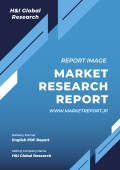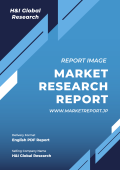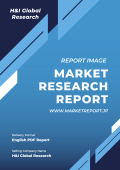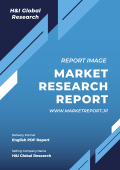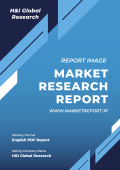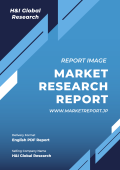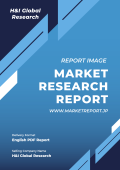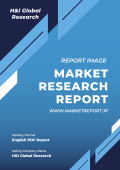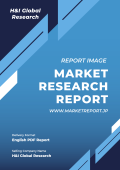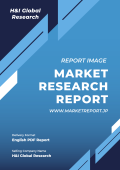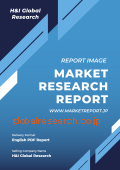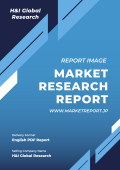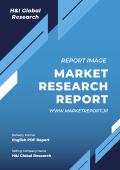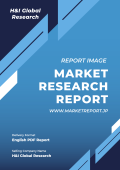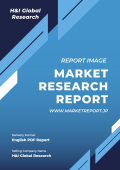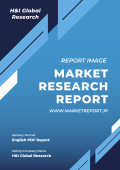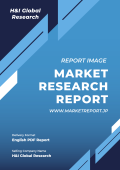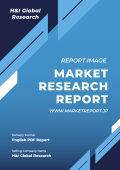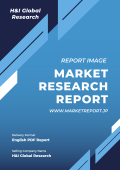| ■ 英語タイトル:Single-Use Bioprocessing Market: Global Industry Trends, Share, Size, Growth, Opportunity and Forecast 2023-2028
|
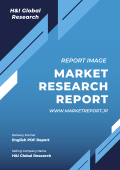 | ■ 発行会社/調査会社:IMARC
■ 商品コード:IMARC23JLY246
■ 発行日:2023年7月
■ 調査対象地域:グローバル
■ 産業分野:医療
■ ページ数:145
■ レポート言語:英語
■ レポート形式:PDF
■ 納品方式:Eメール
|
■ 販売価格オプション
(消費税別)
Warning: foreach() argument must be of type array|object, null given in
/home/hni-mkt/globalresearch.co.jp/public_html/wp-content/themes/twentyfourteen/content.php on line
189
Warning: foreach() argument must be of type array|object, null given in
/home/hni-mkt/globalresearch.co.jp/public_html/wp-content/themes/twentyfourteen/content.php on line
193
Warning: foreach() argument must be of type array|object, null given in
/home/hni-mkt/globalresearch.co.jp/public_html/wp-content/themes/twentyfourteen/content.php on line
197
Warning: Undefined variable $YEN_USD in
/home/hni-mkt/globalresearch.co.jp/public_html/wp-content/themes/twentyfourteen/content.php on line
212
Warning: Undefined variable $YEN_USD in
/home/hni-mkt/globalresearch.co.jp/public_html/wp-content/themes/twentyfourteen/content.php on line
214
Warning: Undefined variable $YEN_USD in
/home/hni-mkt/globalresearch.co.jp/public_html/wp-content/themes/twentyfourteen/content.php on line
216
※販売価格オプションの説明はこちらで、ご購入に関する詳細案内はご利用ガイドでご確認いただけます。
※お支払金額は「換算金額(日本円)+消費税+配送料(Eメール納品は無料)」です。
※Eメールによる納品の場合、通常ご注文当日~2日以内に納品致します。
※レポート納品後、納品日+5日以内に請求書を発行・送付致します。(請求書発行日より2ヶ月以内の銀行振込条件、カード払いも可能)
※IMARC社の概要及び新刊レポートはこちらでご確認いただけます。
*** レポート概要(サマリー)***IMARC社は、2022年136億ドルであった世界の使い捨てバイオプロセシング市場規模が、予測期間中(2023年~2028年)年平均19.8%成長し、2028年には377億ドルに達すると予測しています。当調査資料では、使い捨てバイオプロセシングの世界市場を調査・分析し、序論、範囲・調査手法、エグゼクティブサマリー、イントロダクション、製品タイプ別(培地バッグ&容器、フィルターアセンブリ、シングルユースバイオリアクター、使い捨てミキサー、その他)分析、用途別(ろ過、貯蔵、細胞培養、混合、精製)分析、使用別(上流、発酵、下流)分析、エンドユーザー別(バイオ医薬品メーカー、ライフサイエンス研究開発、その他)分析、地域別(北米、ヨーロッパ、アジア太平洋、中南米、中東/アフリカ)分析、SWOT分析、バリューチェーン分析、ファイブフォース分析、競争状況などの項目を掲載しています。なお、当市場の主要企業には、Applikon Biotechnology、Boehringer Ingelheim、Cesco Bioengineering Company、Corning Inc.、Danaher Corporation、Entegris、Eppendorf AG、Finesse Solutions Inc.、GE Healthcare、Infors、Merck Millipore、Rentschler Biotechnologie、Sartorius Stedim Biotech、Thermo Fisher Scientific and 3M Companyなどが含まれています。
・序論
・範囲・調査手法
・エグゼクティブサマリー
・イントロダクション
・世界の使い捨てバイオプロセシング市場規模:製品タイプ別
- 培地バッグ&容器の市場規模
- フィルターアセンブリの市場規模
- シングルユースバイオリアクタの市場規模
- 使い捨てミキサーの市場規模
- その他製品の市場規模
・世界の使い捨てバイオプロセシング市場規模:用途別
- ろ過用使い捨てバイオプロセシングの市場規模
- 貯蔵用使い捨てバイオプロセシングの市場規模
- 細胞培養用使い捨てバイオプロセシングの市場規模
- 混合用使い捨てバイオプロセシングの市場規模
- 精製用使い捨てバイオプロセシングの市場規模
・世界の使い捨てバイオプロセシング市場規模:使用別
- 上流における市場規模
- 発酵における市場規模
- 下流における市場規模
- における市場規模
・世界の使い捨てバイオプロセシング市場規模:エンドユーザー別
- バイオ医薬品メーカーにおける市場規模
- ライフサイエンス研究開発における市場規模
- その他エンドユーザーにおける市場規模
・世界の使い捨てバイオプロセシング市場規模:地域別
- 北米の使い捨てバイオプロセシング市場規模
- ヨーロッパの使い捨てバイオプロセシング市場規模
- アジア太平洋の使い捨てバイオプロセシング市場規模
- 中南米の使い捨てバイオプロセシング市場規模
- 中東/アフリカの使い捨てバイオプロセシング市場規模
・SWOT分析
・バリューチェーン分析
・ファイブフォース分析
・競争状況 |
Market Overview:
The global single-use bioprocessing market size reached US$ 13.6 Billion in 2022. Looking forward, IMARC Group expects the market to reach US$ 37.7 Billion by 2028, exhibiting a growth rate (CAGR) of 19.8% during 2023-2028. The growing prevalence of chronic diseases, increasing technological advancements, and rising number of drug approvals and biologics represent some of the key factors driving the market.
Single-use bioprocessing technology is designed for filtration, storage, cell culture, mixing, and purification of biopharmaceutical products for one-time use. It is cost-effective, timesaving, and provides flexibility and hassle-free disposal. It assists in increasing productivity by eliminating complex steps and reduces the risks of cross-contamination among individuals as compared to traditional bioprocessing. Besides this, it is beneficial in reducing energy, media consumption, and carbon footprint and providing a sustainable manufacturing process as compared to steel. It is utilized for the effective production of vaccines, plant cell cultivation, and monoclonal antibodies. As it also reduces the time of staff members for set-up, validation, and documentation, the demand for single-use bioprocessing technology is increasing across the globe.
Single-Use Bioprocessing Market Trends:
Presently, the rising prevalence of chronic diseases, such as diabetes, asthma, arthritis, cancer, hypertension, heart attack, stroke, and chronic obstructive pulmonary disease (COPD), among the masses across the globe represents one of the key factors supporting the growth of the market. Apart from this, the growing demand for single-use bioprocessing due to the increasing number of drug approvals and biologics around the world is positively influencing the market. Additionally, rising preferences of products manufactured from high-grade polymer materials and plastic composites, as they offer enhanced integral strength, is offering lucrative growth opportunities to industry investors. Besides this, various benefits offered by single-use bioprocessing systems, such as lower labor, material, and investment costs, are propelling the growth of the market. In addition to this, the emergence of various technological advancements, such as artificial intelligence (AI), machine learning (ML), and big data solutions in single-use bioprocessing for predicting errors and improving accuracy, is bolstering the growth of the market. Moreover, the growing utilization of single-use bioprocessing in media preparation and shipping of biologics while manufacturing pharmaceuticals is offering a favorable market outlook. In line with this, the rising adoption of single-use bioprocessing, as it reduces the amount of carbon dioxide (CO2) compared to traditional bioprocessing, is impelling the growth of the market. Furthermore, the increasing employment of single-use bioprocessing due to the improving healthcare facilities across the globe is contributing to the growth of the market.
Key Market Segmentation:
IMARC Group provides an analysis of the key trends in each sub-segment of the global single-use bioprocessing market report, along with forecasts at the global, regional and country level from 2023-2028. Our report has categorized the market based on product type, application, end-use and end-user.
Product Type Insights:
Media Bags and Containers
Filtration Assemblies
Single-Use Bioreactors
Disposable Mixers
Others
The report has provided a detailed breakup and analysis of the single-use bioprocessing market based on the product type. This includes media bags and containers, filtration assemblies, single-use bioreactors, disposable mixers, and others. According to the report, media bags and containers represented the largest segment.
Application Insights:
Filtration
Storage
Cell Culture
Mixing
Purification
A detailed breakup and analysis of the single-use bioprocessing market based on the application has also been provided in the report. This includes filtration, storage, cell culture, mixing, and purification. According to the report, filtration accounted for the largest market share.
End-Use Insights:
Upstream
Fermentation
Downstream
A detailed breakup and analysis of the single-use bioprocessing market based on the end-use has also been provided in the report. This includes upstream, fermentation, and downstream. According to the report, upstream accounted for the largest market share.
End-User Insights:
Biopharmaceutical Manufacturers
Life Science R&D
Others
A detailed breakup and analysis of the single-use bioprocessing market based on the end-user has also been provided in the report. This includes biopharmaceutical manufacturers, life science R&D, and others. According to the report, biopharmaceutical manufacturers accounted for the largest market share.
Regional Insights:
North America
United States
Canada
Europe
Germany
France
United Kingdom
Italy
Spain
Russia
Others
Asia Pacific
China
Japan
India
South Korea
Australia
Indonesia
Others
Latin America
Brazil
Mexico
Argentina
Colombia
Chile
Peru
Others
Middle East and Africa
Turkey
Saudi Arabia
Iran
United Arab Emirates
Others
The report has also provided a comprehensive analysis of all the major regional markets, which include North America (the United States and Canada); Europe (Germany, France, the United Kingdom, Italy, Spain, Russia, and others); Asia Pacific (China, Japan, India, South Korea, Australia, Indonesia, and others); Latin America (Brazil, Mexico, Argentina, Colombia, Chile, Peru, and others); and the Middle East and Africa (Turkey, Saudi Arabia, Iran, United Arab Emirates, and others). According to the report, North America (the United States and Canada) was the largest market for single-use bioprocessing. Some of the factors driving the North America single-use bioprocessing market included the presence of large-scale manufacturing units, rising geriatric population, increasing healthcare expenditure, etc.
Competitive Landscape:
The report has also provided a comprehensive analysis of the competitive landscape in the global single-use bioprocessing market. Competitive analysis such as market structure, market share by key players, player positioning, top winning strategies, competitive dashboard, and company evaluation quadrant has been covered in the report. Also, detailed profiles of all major companies have been provided. Some of the companies covered include Applikon Biotechnology, Boehringer Ingelheim, Cesco Bioengineering Company, Corning Inc., Danaher Corporation, Entegris, Eppendorf AG, Finesse Solutions Inc., GE Healthcare, Infors, Merck Millipore, Rentschler Biotechnologie, Sartorius Stedim Biotech, Thermo Fisher Scientific Inc., 3M Company, etc. Kindly note that this only represents a partial list of companies, and the complete list has been provided in the report.
Key Questions Answered in This Report
1. How big is the global single-use bioprocessing market?
2. What is the expected growth rate of the global single-use bioprocessing market during 2023-2028?
3. What are the key factors driving the global single-use bioprocessing market?
4. What has been the impact of COVID-19 on the global single-use bioprocessing market?
5. What is the breakup of the global single-use bioprocessing market based on the product type?
6. What is the breakup of the global single-use bioprocessing market based on the application?
7. What is the breakup of the global single-use bioprocessing market based on the end-use?
8. What is the breakup of the global single-use bioprocessing market based on the end-user?
9. What are the key regions in the global single-use bioprocessing market?
10. Who are the key players/companies in the global single-use bioprocessing market?
Market Overview:
The global single-use bioprocessing market size reached US$ 13.6 Billion in 2022. Looking forward, IMARC Group expects the market to reach US$ 37.7 Billion by 2028, exhibiting a growth rate (CAGR) of 19.8% during 2023-2028. The growing prevalence of chronic diseases, increasing technological advancements, and rising number of drug approvals and biologics represent some of the key factors driving the market.
Single-use bioprocessing technology is designed for filtration, storage, cell culture, mixing, and purification of biopharmaceutical products for one-time use. It is cost-effective, timesaving, and provides flexibility and hassle-free disposal. It assists in increasing productivity by eliminating complex steps and reduces the risks of cross-contamination among individuals as compared to traditional bioprocessing. Besides this, it is beneficial in reducing energy, media consumption, and carbon footprint and providing a sustainable manufacturing process as compared to steel. It is utilized for the effective production of vaccines, plant cell cultivation, and monoclonal antibodies. As it also reduces the time of staff members for set-up, validation, and documentation, the demand for single-use bioprocessing technology is increasing across the globe.
Single-Use Bioprocessing Market Trends:
Presently, the rising prevalence of chronic diseases, such as diabetes, asthma, arthritis, cancer, hypertension, heart attack, stroke, and chronic obstructive pulmonary disease (COPD), among the masses across the globe represents one of the key factors supporting the growth of the market. Apart from this, the growing demand for single-use bioprocessing due to the increasing number of drug approvals and biologics around the world is positively influencing the market. Additionally, rising preferences of products manufactured from high-grade polymer materials and plastic composites, as they offer enhanced integral strength, is offering lucrative growth opportunities to industry investors. Besides this, various benefits offered by single-use bioprocessing systems, such as lower labor, material, and investment costs, are propelling the growth of the market. In addition to this, the emergence of various technological advancements, such as artificial intelligence (AI), machine learning (ML), and big data solutions in single-use bioprocessing for predicting errors and improving accuracy, is bolstering the growth of the market. Moreover, the growing utilization of single-use bioprocessing in media preparation and shipping of biologics while manufacturing pharmaceuticals is offering a favorable market outlook. In line with this, the rising adoption of single-use bioprocessing, as it reduces the amount of carbon dioxide (CO2) compared to traditional bioprocessing, is impelling the growth of the market. Furthermore, the increasing employment of single-use bioprocessing due to the improving healthcare facilities across the globe is contributing to the growth of the market.
Key Market Segmentation:
IMARC Group provides an analysis of the key trends in each sub-segment of the global single-use bioprocessing market report, along with forecasts at the global, regional and country level from 2023-2028. Our report has categorized the market based on product type, application, end-use and end-user.
Product Type Insights:
Media Bags and Containers
Filtration Assemblies
Single-Use Bioreactors
Disposable Mixers
Others
The report has provided a detailed breakup and analysis of the single-use bioprocessing market based on the product type. This includes media bags and containers, filtration assemblies, single-use bioreactors, disposable mixers, and others. According to the report, media bags and containers represented the largest segment.
Application Insights:
Filtration
Storage
Cell Culture
Mixing
Purification
A detailed breakup and analysis of the single-use bioprocessing market based on the application has also been provided in the report. This includes filtration, storage, cell culture, mixing, and purification. According to the report, filtration accounted for the largest market share.
End-Use Insights:
Upstream
Fermentation
Downstream
A detailed breakup and analysis of the single-use bioprocessing market based on the end-use has also been provided in the report. This includes upstream, fermentation, and downstream. According to the report, upstream accounted for the largest market share.
End-User Insights:
Biopharmaceutical Manufacturers
Life Science R&D
Others
A detailed breakup and analysis of the single-use bioprocessing market based on the end-user has also been provided in the report. This includes biopharmaceutical manufacturers, life science R&D, and others. According to the report, biopharmaceutical manufacturers accounted for the largest market share.
Regional Insights:
North America
United States
Canada
Europe
Germany
France
United Kingdom
Italy
Spain
Russia
Others
Asia Pacific
China
Japan
India
South Korea
Australia
Indonesia
Others
Latin America
Brazil
Mexico
Argentina
Colombia
Chile
Peru
Others
Middle East and Africa
Turkey
Saudi Arabia
Iran
United Arab Emirates
Others
The report has also provided a comprehensive analysis of all the major regional markets, which include North America (the United States and Canada); Europe (Germany, France, the United Kingdom, Italy, Spain, Russia, and others); Asia Pacific (China, Japan, India, South Korea, Australia, Indonesia, and others); Latin America (Brazil, Mexico, Argentina, Colombia, Chile, Peru, and others); and the Middle East and Africa (Turkey, Saudi Arabia, Iran, United Arab Emirates, and others). According to the report, North America (the United States and Canada) was the largest market for single-use bioprocessing. Some of the factors driving the North America single-use bioprocessing market included the presence of large-scale manufacturing units, rising geriatric population, increasing healthcare expenditure, etc.
Competitive Landscape:
The report has also provided a comprehensive analysis of the competitive landscape in the global single-use bioprocessing market. Competitive analysis such as market structure, market share by key players, player positioning, top winning strategies, competitive dashboard, and company evaluation quadrant has been covered in the report. Also, detailed profiles of all major companies have been provided. Some of the companies covered include Applikon Biotechnology, Boehringer Ingelheim, Cesco Bioengineering Company, Corning Inc., Danaher Corporation, Entegris, Eppendorf AG, Finesse Solutions Inc., GE Healthcare, Infors, Merck Millipore, Rentschler Biotechnologie, Sartorius Stedim Biotech, Thermo Fisher Scientific Inc., 3M Company, etc. Kindly note that this only represents a partial list of companies, and the complete list has been provided in the report.
Key Questions Answered in This Report
1. How big is the global single-use bioprocessing market?
2. What is the expected growth rate of the global single-use bioprocessing market during 2023-2028?
3. What are the key factors driving the global single-use bioprocessing market?
4. What has been the impact of COVID-19 on the global single-use bioprocessing market?
5. What is the breakup of the global single-use bioprocessing market based on the product type?
6. What is the breakup of the global single-use bioprocessing market based on the application?
7. What is the breakup of the global single-use bioprocessing market based on the end-use?
8. What is the breakup of the global single-use bioprocessing market based on the end-user?
9. What are the key regions in the global single-use bioprocessing market?
10. Who are the key players/companies in the global single-use bioprocessing market?
Figure 1: Global: Single-Use Bioprocessing Market: Major Drivers and Challenges
Figure 2: Global: Single-Use Bioprocessing Market: Sales Value (in Billion US$), 2017-2022
Figure 3: Global: Single-Use Bioprocessing Market: Breakup by Product Type (in %), 2022
Figure 4: Global: Single-Use Bioprocessing Market: Breakup by Application (in %), 2022
Figure 5: Global: Single-Use Bioprocessing Market: Breakup by End-Use (in %), 2022
Figure 6: Global: Single-Use Bioprocessing Market: Breakup by End-User (in %), 2022
Figure 7: Global: Single-Use Bioprocessing Market: Breakup by Region (in %), 2022
Figure 8: Global: Single-Use Bioprocessing Market Forecast: Sales Value (in Billion US$), 2023-2028
Figure 9: Global: Single-Use Bioprocessing (Media Bags and Containers) Market: Sales Value (in Million US$), 2017 & 2022
Figure 10: Global: Single-Use Bioprocessing (Media Bags and Containers) Market Forecast: Sales Value (in Million US$), 2023-2028
Figure 11: Global: Single-Use Bioprocessing (Filtration Assemblies) Market: Sales Value (in Million US$), 2017 & 2022
Figure 12: Global: Single-Use Bioprocessing (Filtration Assemblies) Market Forecast: Sales Value (in Million US$), 2023-2028
Figure 13: Global: Single-Use Bioprocessing (Single-Use Bioreactors) Market: Sales Value (in Million US$), 2017 & 2022
Figure 14: Global: Single-Use Bioprocessing (Single-Use Bioreactors) Market Forecast: Sales Value (in Million US$), 2023-2028
Figure 15: Global: Single-Use Bioprocessing (Disposable Mixers) Market: Sales Value (in Million US$), 2017 & 2022
Figure 16: Global: Single-Use Bioprocessing (Disposable Mixers) Market Forecast: Sales Value (in Million US$), 2023-2028
Figure 17: Global: Single-Use Bioprocessing (Other Product Types) Market: Sales Value (in Million US$), 2017 & 2022
Figure 18: Global: Single-Use Bioprocessing (Other Product Types) Market Forecast: Sales Value (in Million US$), 2023-2028
Figure 19: Global: Single-Use Bioprocessing (Filtration) Market: Sales Value (in Million US$), 2017 & 2022
Figure 20: Global: Single-Use Bioprocessing (Filtration) Market Forecast: Sales Value (in Million US$), 2023-2028
Figure 21: Global: Single-Use Bioprocessing (Storage) Market: Sales Value (in Million US$), 2017 & 2022
Figure 22: Global: Single-Use Bioprocessing (Storage) Market Forecast: Sales Value (in Million US$), 2023-2028
Figure 23: Global: Single-Use Bioprocessing (Cell Culture) Market: Sales Value (in Million US$), 2017 & 2022
Figure 24: Global: Single-Use Bioprocessing (Cell Culture) Market Forecast: Sales Value (in Million US$), 2023-2028
Figure 25: Global: Single-Use Bioprocessing (Mixing) Market: Sales Value (in Million US$), 2017 & 2022
Figure 26: Global: Single-Use Bioprocessing (Mixing) Market Forecast: Sales Value (in Million US$), 2023-2028
Figure 27: Global: Single-Use Bioprocessing (Purification) Market: Sales Value (in Million US$), 2017 & 2022
Figure 28: Global: Single-Use Bioprocessing (Purification) Market Forecast: Sales Value (in Million US$), 2023-2028
Figure 29: Global: Single-Use Bioprocessing (Upstream) Market: Sales Value (in Million US$), 2017 & 2022
Figure 30: Global: Single-Use Bioprocessing (Upstream) Market Forecast: Sales Value (in Million US$), 2023-2028
Figure 31: Global: Single-Use Bioprocessing (Fermentation) Market: Sales Value (in Million US$), 2017 & 2022
Figure 32: Global: Single-Use Bioprocessing (Fermentation) Market Forecast: Sales Value (in Million US$), 2023-2028
Figure 33: Global: Single-Use Bioprocessing (Downstream) Market: Sales Value (in Million US$), 2017 & 2022
Figure 34: Global: Single-Use Bioprocessing (Downstream) Market Forecast: Sales Value (in Million US$), 2023-2028
Figure 35: Global: Single-Use Bioprocessing (Biopharmaceutical Manufacturers) Market: Sales Value (in Million US$), 2017 & 2022
Figure 36: Global: Single-Use Bioprocessing (Biopharmaceutical Manufacturers) Market Forecast: Sales Value (in Million US$), 2023-2028
Figure 37: Global: Single-Use Bioprocessing (Life Science R&D) Market: Sales Value (in Million US$), 2017 & 2022
Figure 38: Global: Single-Use Bioprocessing (Life Science R&D) Market Forecast: Sales Value (in Million US$), 2023-2028
Figure 39: Global: Single-Use Bioprocessing (Other End-Users) Market: Sales Value (in Million US$), 2017 & 2022
Figure 40: Global: Single-Use Bioprocessing (Other End-Users) Market Forecast: Sales Value (in Million US$), 2023-2028
Figure 41: North America: Single-Use Bioprocessing Market: Sales Value (in Million US$), 2017 & 2022
Figure 42: North America: Single-Use Bioprocessing Market Forecast: Sales Value (in Million US$), 2023-2028
Figure 43: United States: Single-Use Bioprocessing Market: Sales Value (in Million US$), 2017 & 2022
Figure 44: United States: Single-Use Bioprocessing Market Forecast: Sales Value (in Million US$), 2023-2028
Figure 45: Canada: Single-Use Bioprocessing Market: Sales Value (in Million US$), 2017 & 2022
Figure 46: Canada: Single-Use Bioprocessing Market Forecast: Sales Value (in Million US$), 2023-2028
Figure 47: Europe: Single-Use Bioprocessing Market: Sales Value (in Million US$), 2017 & 2022
Figure 48: Europe: Single-Use Bioprocessing Market Forecast: Sales Value (in Million US$), 2023-2028
Figure 49: Germany: Single-Use Bioprocessing Market: Sales Value (in Million US$), 2017 & 2022
Figure 50: Germany: Single-Use Bioprocessing Market Forecast: Sales Value (in Million US$), 2023-2028
Figure 51: France: Single-Use Bioprocessing Market: Sales Value (in Million US$), 2017 & 2022
Figure 52: France: Single-Use Bioprocessing Market Forecast: Sales Value (in Million US$), 2023-2028
Figure 53: United Kingdom: Single-Use Bioprocessing Market: Sales Value (in Million US$), 2017 & 2022
Figure 54: United Kingdom: Single-Use Bioprocessing Market Forecast: Sales Value (in Million US$), 2023-2028
Figure 55: Italy: Single-Use Bioprocessing Market: Sales Value (in Million US$), 2017 & 2022
Figure 56: Italy: Single-Use Bioprocessing Market Forecast: Sales Value (in Million US$), 2023-2028
Figure 57: Spain: Single-Use Bioprocessing Market: Sales Value (in Million US$), 2017 & 2022
Figure 58: Spain: Single-Use Bioprocessing Market Forecast: Sales Value (in Million US$), 2023-2028
Figure 59: Russia: Single-Use Bioprocessing Market: Sales Value (in Million US$), 2017 & 2022
Figure 60: Russia: Single-Use Bioprocessing Market Forecast: Sales Value (in Million US$), 2023-2028
Figure 61: Others: Single-Use Bioprocessing Market: Sales Value (in Million US$), 2017 & 2022
Figure 62: Others: Single-Use Bioprocessing Market Forecast: Sales Value (in Million US$), 2023-2028
Figure 63: Asia Pacific: Single-Use Bioprocessing Market: Sales Value (in Million US$), 2017 & 2022
Figure 64: Asia Pacific: Single-Use Bioprocessing Market Forecast: Sales Value (in Million US$), 2023-2028
Figure 65: China: Single-Use Bioprocessing Market: Sales Value (in Million US$), 2017 & 2022
Figure 66: China: Single-Use Bioprocessing Market Forecast: Sales Value (in Million US$), 2023-2028
Figure 67: Japan: Single-Use Bioprocessing Market: Sales Value (in Million US$), 2017 & 2022
Figure 68: Japan: Single-Use Bioprocessing Market Forecast: Sales Value (in Million US$), 2023-2028
Figure 69: India: Single-Use Bioprocessing Market: Sales Value (in Million US$), 2017 & 2022
Figure 70: India: Single-Use Bioprocessing Market Forecast: Sales Value (in Million US$), 2023-2028
Figure 71: South Korea: Single-Use Bioprocessing Market: Sales Value (in Million US$), 2017 & 2022
Figure 72: South Korea: Single-Use Bioprocessing Market Forecast: Sales Value (in Million US$), 2023-2028
Figure 73: Australia: Single-Use Bioprocessing Market: Sales Value (in Million US$), 2017 & 2022
Figure 74: Australia: Single-Use Bioprocessing Market Forecast: Sales Value (in Million US$), 2023-2028
Figure 75: Indonesia: Single-Use Bioprocessing Market: Sales Value (in Million US$), 2017 & 2022
Figure 76: Indonesia: Single-Use Bioprocessing Market Forecast: Sales Value (in Million US$), 2023-2028
Figure 77: Others: Single-Use Bioprocessing Market: Sales Value (in Million US$), 2017 & 2022
Figure 78: Others: Single-Use Bioprocessing Market Forecast: Sales Value (in Million US$), 2023-2028
Figure 79: Latin America: Single-Use Bioprocessing Market: Sales Value (in Million US$), 2017 & 2022
Figure 80: Latin America: Single-Use Bioprocessing Market Forecast: Sales Value (in Million US$), 2023-2028
Figure 81: Brazil: Single-Use Bioprocessing Market: Sales Value (in Million US$), 2017 & 2022
Figure 82: Brazil: Single-Use Bioprocessing Market Forecast: Sales Value (in Million US$), 2023-2028
Figure 83: Mexico: Single-Use Bioprocessing Market: Sales Value (in Million US$), 2017 & 2022
Figure 84: Mexico: Single-Use Bioprocessing Market Forecast: Sales Value (in Million US$), 2023-2028
Figure 85: Argentina: Single-Use Bioprocessing Market: Sales Value (in Million US$), 2017 & 2022
Figure 86: Argentina: Single-Use Bioprocessing Market Forecast: Sales Value (in Million US$), 2023-2028
Figure 87: Colombia: Single-Use Bioprocessing Market: Sales Value (in Million US$), 2017 & 2022
Figure 88: Colombia: Single-Use Bioprocessing Market Forecast: Sales Value (in Million US$), 2023-2028
Figure 89: Chile: Single-Use Bioprocessing Market: Sales Value (in Million US$), 2017 & 2022
Figure 90: Chile: Single-Use Bioprocessing Market Forecast: Sales Value (in Million US$), 2023-2028
Figure 91: Peru: Single-Use Bioprocessing Market: Sales Value (in Million US$), 2017 & 2022
Figure 92: Peru: Single-Use Bioprocessing Market Forecast: Sales Value (in Million US$), 2023-2028
Figure 93: Others: Single-Use Bioprocessing Market: Sales Value (in Million US$), 2017 & 2022
Figure 94: Others: Single-Use Bioprocessing Market Forecast: Sales Value (in Million US$), 2023-2028
Figure 95: Middle East and Africa: Single-Use Bioprocessing Market: Sales Value (in Million US$), 2017 & 2022
Figure 96: Middle East and Africa: Single-Use Bioprocessing Market Forecast: Sales Value (in Million US$), 2023-2028
Figure 97: Turkey: Single-Use Bioprocessing Market: Sales Value (in Million US$), 2017 & 2022
Figure 98: Turkey: Single-Use Bioprocessing Market Forecast: Sales Value (in Million US$), 2023-2028
Figure 99: Saudi Arabia: Single-Use Bioprocessing Market: Sales Value (in Million US$), 2017 & 2022
Figure 100: Saudi Arabia: Single-Use Bioprocessing Market Forecast: Sales Value (in Million US$), 2023-2028
Figure 101: Iran: Single-Use Bioprocessing Market: Sales Value (in Million US$), 2017 & 2022
Figure 102: Iran: Single-Use Bioprocessing Market Forecast: Sales Value (in Million US$), 2023-2028
Figure 103: United Arab Emirates: Single-Use Bioprocessing Market: Sales Value (in Million US$), 2017 & 2022
Figure 104: United Arab Emirates: Single-Use Bioprocessing Market Forecast: Sales Value (in Million US$), 2023-2028
Figure 105: Others: Single-Use Bioprocessing Market: Sales Value (in Million US$), 2017 & 2022
Figure 106: Others: Single-Use Bioprocessing Market Forecast: Sales Value (in Million US$), 2023-2028
Figure 107: Global: Single-Use Bioprocessing Industry: SWOT Analysis
Figure 108: Global: Single-Use Bioprocessing Industry: Value Chain Analysis
Figure 109: Global: Single-Use Bioprocessing Industry: Porter’s Five Forces Analysis
*** 免責事項 ***https://www.globalresearch.co.jp/disclaimer/
